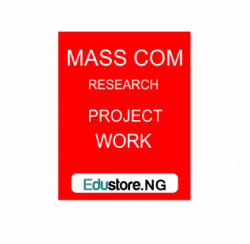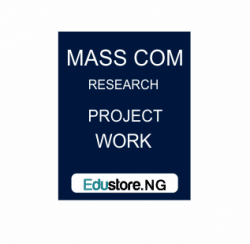CHAPTER ONE
INTRODUCTION
1.1 Background of the Study
Broadcasting has been at the forefront of many technological changes, mostly in digitalization and enhancement of existing technology. For example, digital technology now permits listeners to obtain traffic information and news per se, while listening to a cassette, compact disc or radio station etc. (Church Akpan 2006).
We are all living in a changing world, and over the past many ears we have been conditioned to accept changes in the way we think and relate. Thus, communication between the peoples of the world which sounded utopist before is now becoming a reality in or very eyes giving practical meaning to Marshall Mollohan’s view of the world ad a global village interlinked by communication technologies, (Mc Lucan, 1964. P47)
Information and Communication Technologies (ICT) are electronic machines and devices. Their application have both computing and communication capabilities. They range from physical devices like digital cameras, tape recorders, computers, sensing devices, scanners, mobile phone, etc to cyber space-the internet, software, teleconferencing, satellite etc. Their application is broad and cuts across all interpersonal and mass communication media, giving more power, robustness and veracity to their operations and performance. More thane ninety years after the world’s first broadcasting station were pounded, radio is still the most persuasive, accessible, affordable and flexible mass medium available in cities, urban towns and rural areas. It is often the only mass medium available to majority of the people.
The application of information and communication technologies into broadcasting especially radio broadcasting is therefore designed to boost and enhance qualities of broadcast programmes. Most importantly has been the digitization.
- For Reference Only: Materials are for research, citation, and idea generation purposes and not for submission as your original final year project work.
- Avoid Plagiarism: Do not copy or submit this content as your own project. Doing so may result in academic consequences.
- Use as a Framework: This complete project research material should guide the development of your own final year project work.
- Academic Access: This platform is designed to reduce the stress of visiting school libraries by providing easy access to research materials.
- Institutional Support: Tertiary institutions encourage the review of previous academic works such as journals and theses.
- Open Education: The site is maintained through paid subscriptions to continue offering open access educational resources.





